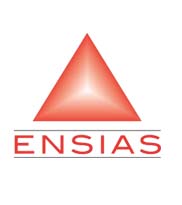- Accueil
-
L'Ecole
-
FORMATIONS
-
FORMATION INGENIEUR
-
Nouvelles filières offertes
- Ingénierie Intelligence Artificielle (2IA)
- Smart Supply Chain & Logistics (2SCL)
- Business Intelligence & Analytics (BI&A)
- Cybersécurité, Cloud et Informatique Mobile (CSCC)
- Data and Software Sciences (D2S)
- Génie de la Data (GD)
- Génie Logiciel (GL)
- Ingénierie Digitale pour la Finance (IDF)
- Smart System Engineering (SSE)
- REGLEMENT DES ETUDES DE L’ENSIAS CYCLE INGENIEUR
-
Nouvelles filières offertes
-
FORMATION INGENIEUR
- FORMATION CONTINUE
-
Recherche
- INTERNATIONAL
- ENTREPRISES
- VIE ESTUDIANTINE
- BIBLIOTHEQUE
LES DERNIÈRES INFORMATIONS
Reviewing Machine Learning and Image Processing Based Decision-Making Systems for Breast Cancer Imaging
| Titre | Reviewing Machine Learning and Image Processing Based Decision-Making Systems for Breast Cancer Imaging |
| Publication Type | Journal Article |
| Year of Publication | 2021 |
| Authors | Zerouaoui, H, Idri, A |
| Journal | Journal of Medical Systems |
| Volume | 45 |
| Mots-clés | Article, breast, Breast Cancer, cancer diagnosis, classifier, Computer-Assisted, Convolutional neural network, Decision making, Deep learning, deep neural network, diagnostic accuracy, diagnostic imaging, echography, Feature extraction, feature selection, female, human, Humans, image processing, image segmentation, Machine learning, Magnetic Resonance Imaging, mammography, multilayer perceptron, nuclear magnetic resonance imaging |
| Abstract | Breast cancer (BC) is the leading cause of death among women worldwide. It affects in general women older than 40 years old. Medical images analysis is one of the most promising research areas since it provides facilities for diagnosis and decision-making of several diseases such as BC. This paper conducts a Structured Literature Review (SLR) of the use of Machine Learning (ML) and Image Processing (IP) techniques to deal with BC imaging. A set of 530 papers published between 2000 and August 2019 were selected and analyzed according to ten criteria: year and publication channel, empirical type, research type, medical task, machine learning techniques, datasets used, validation methods, performance measures and image processing techniques which include image pre-processing, segmentation, feature extraction and feature selection. Results showed that diagnosis was the most used medical task and that Deep Learning techniques (DL) were largely used to perform classification. Furthermore, we found out that classification was the most ML objective investigated followed by prediction and clustering. Most of the selected studies used Mammograms as imaging modalities rather than Ultrasound or Magnetic Resonance Imaging with the use of public or private datasets with MIAS as the most frequently investigated public dataset. As for image processing techniques, the majority of the selected studies pre-process their input images by reducing the noise and normalizing the colors, and some of them use segmentation to extract the region of interest with the thresholding method. For feature extraction, we note that researchers extracted the relevant features using classical feature extraction techniques (e.g. Texture features, Shape features, etc.) or DL techniques (e. g. VGG16, VGG19, ResNet, etc.), and finally few papers used feature selection techniques in particular the filter methods. © 2021, The Author(s), under exclusive licence to Springer Science+Business Media, LLC part of Springer Nature. |
| URL | https://www.scopus.com/inward/record.uri?eid=2-s2.0-85100125842&doi=10.1007%2fs10916-020-01689-1&partnerID=40&md5=3074b3d443373f75f5a3c1c6134512ee |
| DOI | 10.1007/s10916-020-01689-1 |
Revues:
LIENS UTILES
Localisation
Contactez-nous
ENSIAS
 Avenue Mohammed Ben Abdallah Regragui, Madinat Al Irfane, BP 713, Agdal Rabat, Maroc
Avenue Mohammed Ben Abdallah Regragui, Madinat Al Irfane, BP 713, Agdal Rabat, Maroc
![]() Télécopie : (+212) 5 37 68 60 78
Télécopie : (+212) 5 37 68 60 78
![]() Secrétariat de direction : 06 61 48 10 97
Secrétariat de direction : 06 61 48 10 97
Secrétariat général : 06 61 34 09 27
Service des affaires financières : 06 61 44 76 79
Service des affaires estudiantines : 06 62 77 10 17 / n.mhirich@um5s.net.ma
CEDOC ST2I : 06 66 39 75 16
Résidences : 06 61 82 89 77
- Compteur de visiteurs:635,548
Education - This is a contributing Drupal Theme
Design by WeebPal.
Design by WeebPal.



































